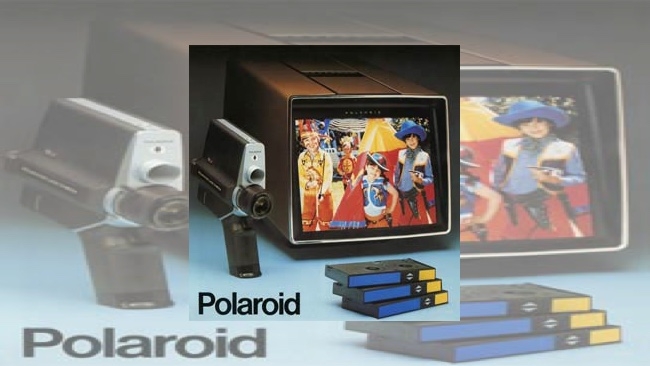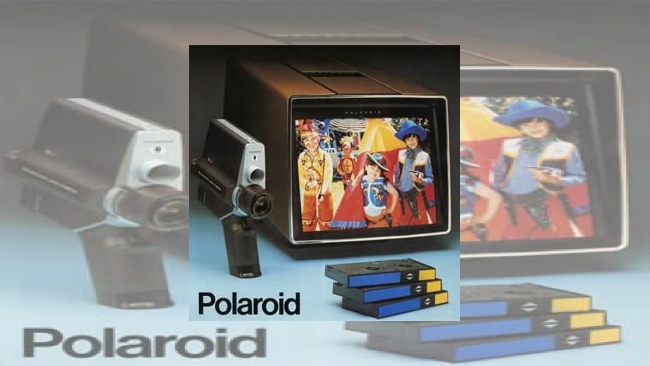
 Polavision: Instant film on your kitchen table
Polavision: Instant film on your kitchen table
Part of the Forgotten Technologies series. We’re probably all familiar with Polaroid instant film cameras, but how many remember Polaroid’s ill-fated attempt at instant movies - Polavision?
Polavision was launched in 1977, just as home video was arriving on the scene.
The camera, built by Eumig and equipped with x2 zoom lens, held a proprietary cartridge containing 40’ of Super 8mm film. The film was ‘developed’ and viewed in a table-top viewer with a back projection screen.
Conventional Super 8mm film like Kodachrome demanded complex developing involving dye-couplers added in processing. This could not be done in the home, let alone in the cassette itself, so Polaroid adopted a much simpler additive system, rather like the early Dufaycolor, using a filmstock with three colour filter layers. Unfortunately the resulting image was very dense and described as ‘murky and dark’ with a grain ‘closer in appearance to the dots on a colour television screen’ than regular film. Moreover, unlike video, the cassette only ran for two and half minutes, lacked sound and could not be shown on your TV. It was discontinued in 1979.
1978 Polavision TV commercial
Surprisingly, five years after its consumer demise, Polavision turned up in 1984 in the UK Samuleson hire catalogue as a checking device for high speed cinematography. If you are running film through your camera at 500fps you obviously want to know if the shot worked or not before you waste more film. There was no such thing as high-speed video assist at the time so Samuelson offered a specially-modified Polavision camera running at 400fps.
Useful as it was, the 50’ of black and white film running at high speed could only have lasted for something like seven and half seconds. Astonishingly, at £120 a day (equivalent to over £350 in today’s money) the Polavision camera cost almost as much at the Photosonics 16mm high speed camera to hire.
But this was not the first attempt at instant movies. John Logie Baird, one of the pioneers of TV, used an ‘intermediate’ film system in his studio cameras in the early 1930s. These were 35mm film cameras with developing tanks beneath them - the film developed straight out of the camera was scanned while it was still wet. Not surprisingly, in the UK Baird’s mechanical scanning system was soon dropped in favour of the electronic system pioneered by EMI (similar to the system developed by RCA in the USA).
Instant movies are now history, but Polaroid still markets an instant digital camera and Fuji continues the tradition of the instant film camera under the Instax brand (based on the Kodak system that was successfully sued by Polaroid and then withdrawn). Polaroid instant still film lives on courtesy of the Impossible Project, started by a group of European enthusiasts who took over the last factory making Polaroid film in Holland. Their products are marketed not so much for convenience as for particular painterly look of Polaroid film, much loved by artists and fashion photographers.
There are many companies offering Polavision to DVD transfers and you can still find Polavision cameras, viewers and film on eBay. One can only guess what the film, over three decades out of date and dark and grainy when it was new, would look like now. But I’m sure there are some indie filmmakers just itching to find out…
Tags: Technology


Comments